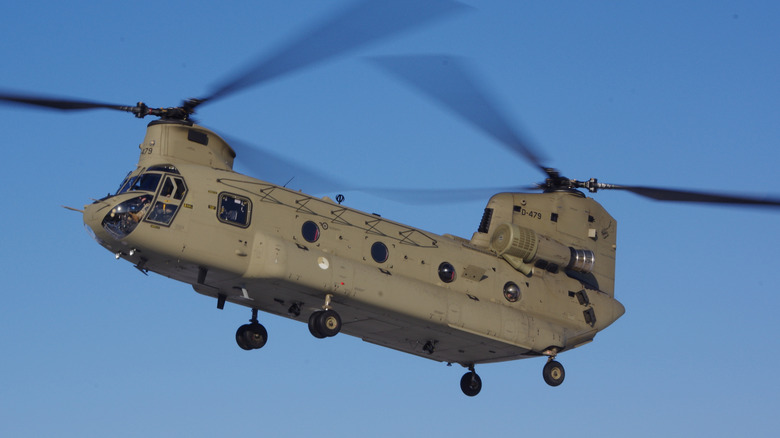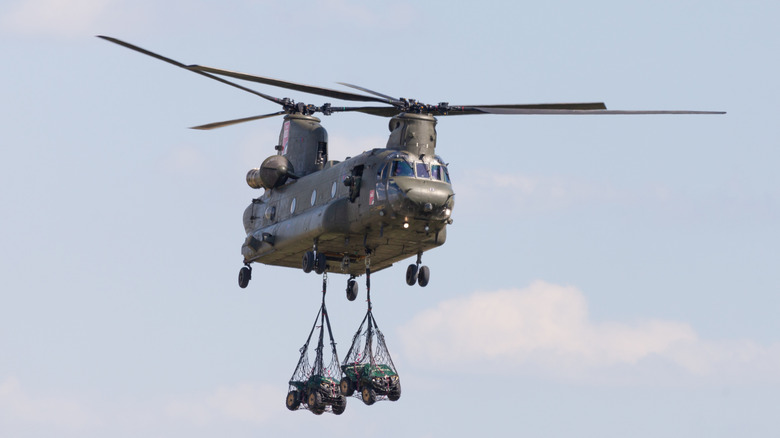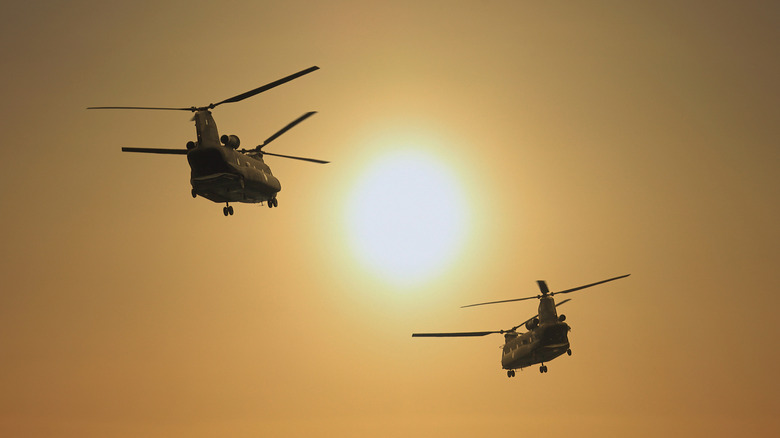Can A Chinook Fly With One Rotor & Is It Still America's Fastest Military Helicopter?
Named after the Native American tribe from the Pacific Northwest of the United States, the Chinook helicopter is often regarded as one of America's most iconic military aircraft. The Chinook first took flight in 1961, over six decades ago, and has since remained in active duty with the Armed Forces, supporting critical combat and non-combat operations.
Its official designation is the CH-47 Chinook, where the "CH" stands for "Cargo Helicopter." It is a clear pointer to the aircraft's purpose as a heavy-lift helicopter, able to carry over 22,000 lbs. (10,000 kg) of internal or external cargo. Originally developed by the American rotorcraft company Vertol, the Chinook has been produced by Boeing since its acquisition of Vertol in 1960.
The CH-47 Chinook is a twin-engine, tandem-rotor aircraft. Its easily distinguishable profile is characterized by rotors affixed to the front and rear sections of the fuselage. The Chinook helicopter is able to fly on one engine, albeit with degraded performance capabilities. However, the failure of one of its rotors would most likely prove to be fatal.
The rotor systems are designed to work in unison, connected to the same drive shaft to ensure that the blades spin at the same speed, but in opposite directions. Each rotor cancels out the rotational force (torque) of the other, providing balanced lift and directional control. The loss of one of the rotor systems would disrupt this balance, immediately rendering the Chinook unstable and unable to continue flying.
The Chinook is a rocket at full bore
Current iterations of the CH-47 Chinook have an empty weight of around 26,300 lbs (11,930 kg). Fully loaded, they can weigh as much as 54,000 lbs (24,500 kg), making it one of the heaviest helicopters in service today. Despite its bulk, this flying behemoth is also one of America's fastest military helicopters – and for a time, it was the single fastest option available.
Packed within the helicopter's frame are a pair of Honeywell T55 turboshaft engines that crank out almost 5,000 shaft horsepower (3,529 kW) apiece, propelling the Chinook to top speeds of around 196 mph (315 kph) in ideal conditions. That places it ahead of other notable American helicopters like the UH-60 Black Hawk and the formidable AH-64 Apache. With a load of 44 seated troops, the Chinook can fly at speeds of up to 150 mph (241 km/h) for 400 nautical miles (741 km), a range that can be extended with the addition of auxiliary fuel tanks as well.
With that said, the Chinook is no longer the fastest helicopter used by the U.S. military, having been surpassed by the "King Stallion" CH-53K. This model has a cruise speed of 195 mph (170 knots), but can go up to around 230 mph at its fastest.
America's workhorse shows no signs of slowing down anytime soon
The Chinook belongs to a rarefied club, one of the few military aircraft that have been in regular service since the 1960s. The helicopter's first proving ground was the Vietnam War, where it was extensively used to support troops in combat operations. Since then, the Chinook has seen active service in various theatres of operations around the world, supporting direct military actions, disaster relief, and humanitarian efforts.
The CH-47 Chinook has undergone numerous upgrades over its service life, ensuring its continued relevance in modern military operations. Its longevity can be attributed to its versatility as an operations platform. Primarily designed as a transport helicopter, the CH-47 can be outfitted for specialized missions, including medical evacuation, search and rescue, and even aerial firefighting.
Its robust design and exceptional lifting capabilities continue to make it a crucial asset to its clientele worldwide. In 2023, U.S. Army officials stated the CH-47 Chinook could end up flying for 100 years, only retiring around 2060 — an achievement that could cement its status as one of America's most legendary military aircraft.


